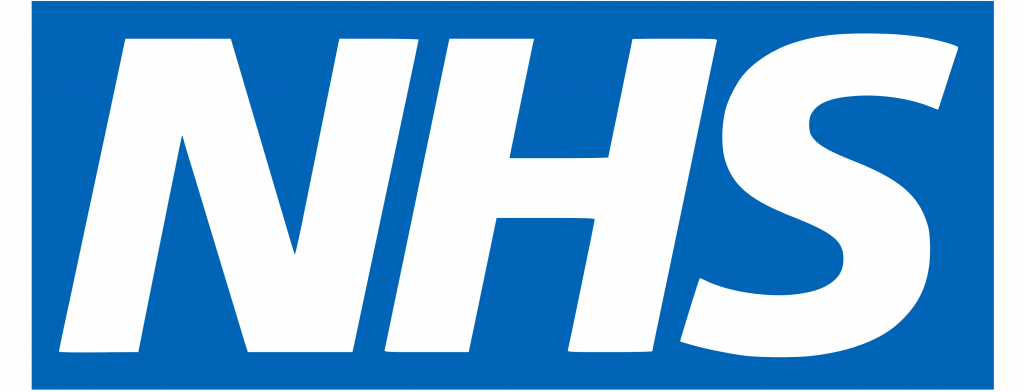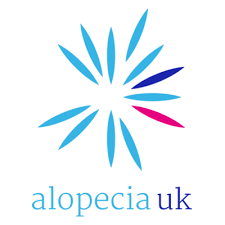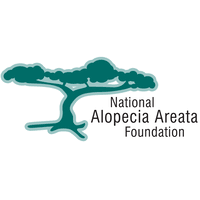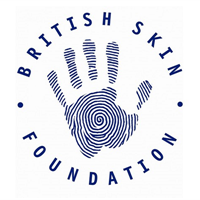What is alopecia areata?
Alopecia is a general term used for hair loss of any kind. Alopecia areata is a name given to a particular type of hair loss. It is usually associated with small, coin-size, bald patches.
It affects 1% of the population and is often seen in children and young adults. It can affect any race and any skin type. Most patients have small patches but in some the condition can be more extensive causing significant hair loss. It can be a very distressing condition to develop because of the cosmetic embarrassment it causes. Many patients experience significant psychological stress.
Is alopecia areata dangerous to my general health?
Fortunately, alopecia areata does not cause any other medical problems. However, it is important to be aware that people with alopecia areata are slightly more prone to develop other autoimmune conditions such as: thyroid disease, vitiligo, and diabetes. We would normally recommend that all patients have their thyroid function tested every 5-years including children.
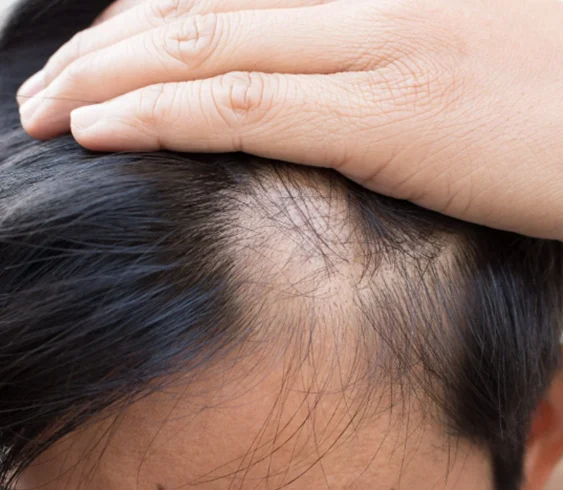
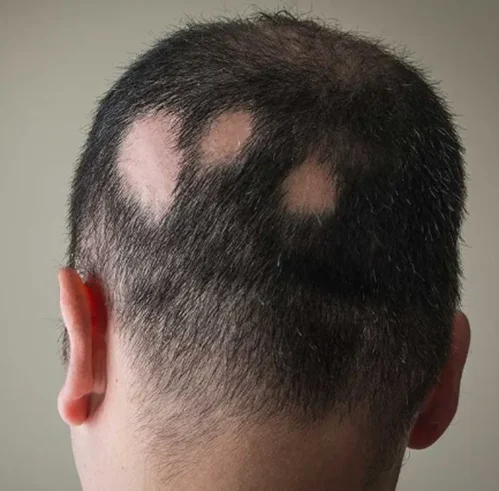
What does alopecia areata look like?
Typically, it starts as one or more bald, smooth patches on the scalp which are not sore or scaly. Hair loss can develop at any body-site including the beard area, eyebrows or trunk. Occasionally, mild itch can be experienced in the early stages, but most patients have no symptoms other than sudden onset of hair loss.
In some individuals the hair loss can be more diffuse. It can sometimes fall out in tufts leaving bald patches with growing hairs in the middle. When the hair regrows, it is not unusual for it to be white for many weeks before it becomes darker again. Most patients have no other changes at other body sites but in more severe forms, pitting of the nails can be observed.
Will the hair loss recover?
Many patients experience attacks of alopecia areata lasting a few weeks to months with full recovery of the hair growth at affected sites. The potential to recover is far higher in those with smaller patches at the start and in younger children.
If you develop extensive hair loss due to alopecia as an adult affecting more than 50% of the scalp or total loss, only 10-15% of patients will experience full regrowth at a later date. The prognosis is also worse if there is extensive hair loss on the trunk or complete loss of the eyebrows associated with scalp hair loss. Even when complete loss does occur, some patients will still develop a full recovery even after 2 or more years of loss.
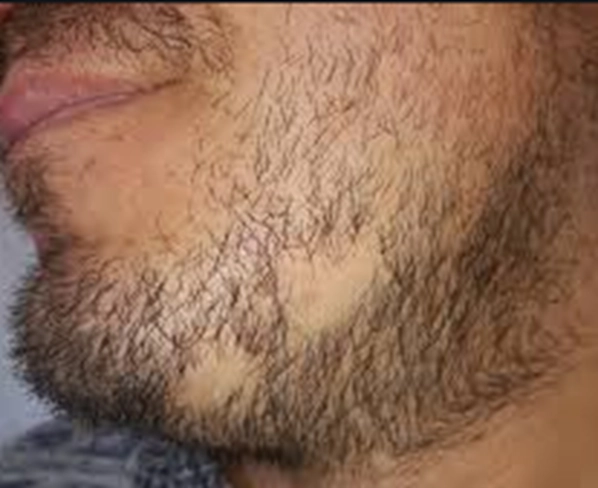
Treatments for alopecia areata
Alopecia areata is a frustrating condition to manage for both patients and doctors because there are relatively few treatment options.
Despite knowing that it is due to an over-active immune system, we have few drugs that can treat the condition without causing significant side-effects that outweigh the cosmetic embarrassment experienced by patients. With time, we expect that there will be new safe treatments that can specifically target the causes of alopecia areata without causing other risks. These are limited at present:
Treatment of localised alopecia areata
Dermovate® cream (clobetasol propionate 0.05%) 30g
Potent topical steroids such as Dermovate® cream can be successfully applied to small areas of hair loss on the scalp. This needs to be applied once daily for 12-weeks to assess if a response is achieved.
If successful, it is continued once or twice weekly for another 3-4 months. The risks of using this steroid on the scalp are negligible but we would not recommend use on the central face, beard area, or eyebrows.
Protopic® 0.1% gel (tacrolimus 0.1%) 30g
Protopic® suppresses inflammatory cells that cause alopecia areata in a similar way to topical steroids. A key advantage of Protopic® gel is that there is no risk of skin thinning so it can be used on the central face. It is slightly greasy to apply so it should be used once daily at night-time. It needs to be applied for 3-4 months to see if there is a response and is then continued twice weekly for a further 3-4 months.
Intra-lesional steroid injections (triamcinolone)
A single injection of Triamcinolone diluted with local anaesthetic may be tried for very localised areas of alopecia when topical treatments have failed. A single injection may kick-start regrowth of the hair. If hair regrowth does develop it does so within 3-4 weeks.
There are number of disadvantages of injections of potent steroids that include pain associated with the injection, a risk of skin thinning and loss of fat (resulting in depression of the skin), and a small risk of systemic absorption. Repeated injections are not normally funded through the NHS but may be available privately for very localised areas such as the beard area or eyebrow loss.
Some patients chose to see a dermatologist privately for injections every 3-4 months if successful. This treatment is not very suitable for children because of the fact that it is painful and it has no role to play in more extensive disease.
Treatment of generalised alopecia areata
The treatment of more generalised hair loss affecting the scalp is challenging because few treatments are successful, are limited by side-effects, or are only available privately. Many of these other treatments are not available through public funded healthcare systems because they have a low success rate and can be expensive.
Oral prenisolone 20-30mg
- daily for 4-weeks
When alopecia areata first develops and is extensive, some patients may benefit from a course of oral prednisolone for 4-weeks to see if the hair regrows. The course can be extended for another 6-weeks but we do not normally recommend further treatment after this time because prolonged use of steroids can be harmful for the bones, cause weight gain, and other systemic side-effects.
Some younger patients may have 2 courses per year if successful. We would not normally recommend longer courses of treatment because of a risk of longer-term side-effects. If no response is seen within 4-weeks, treatment is usually stopped.
New immuno-suppressive treatments
In the past, a whole range of immunosuppressive treatments have been tried that include sulfasalazine, methotrexate, ciclosporin, and azathioprine. Unfortunately, all of these drugs had serious potential risks associated with them requiring specialist supervision and repeated blood tests.
There have been significant developments in the selective targeting of parts of the immune system in recent years using new immunotherapy drugs. It is hoped that there will be new therapies emerging in the next 10-years that will have favourable safety profiles and that will not be too expensive. We have seen this with many chronic skin disorders including psoriasis.
Wig use and further information
Some people consider wearing a wig for more extensive disease. These can be bought privately or obtained through the NHS on a consultant’s prescription (financial contribution is usually required in England).
You may find that joining a patient support group (see below) and meeting other people with alopecia areata will make it easier for you to adjust to your condition.
Some men and a few women with extensive alopecia find that shaving off the remainder of the hair provides a good solution.
Remember that an important function of hair is to protect the scalp from sunlight. You should cover your bald patches with a sun block or a hat to prevent sunburn and to reduce the chances of developing long-term sun damage.


